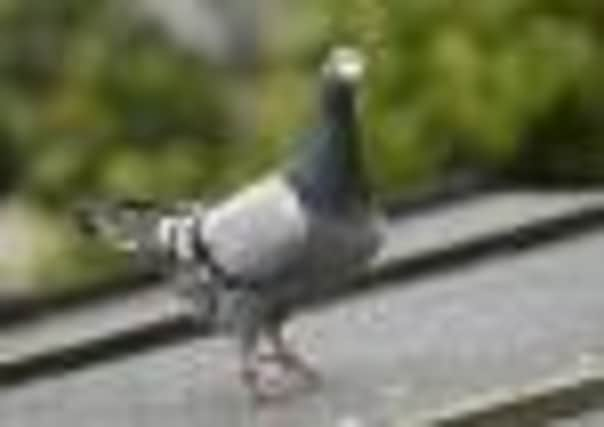Country & Coast: The net result of when a visiting pigeon tried to walk on water


It shares food with our garden birds, sometimes chasing off wood pigeons or collared doves, but it seems to tolerate smaller species. However, they don’t like it because most will fly away when it arrives.
They are happy in the presence of collared doves and wood pigeons and will feed alongside Ferdinand, our visiting pheasant. They do not fear these large birds, so I wonder if the colouring of our visitor suggests a hawk of some kind. It is not hawk-shaped, although it does have long, pointed wings.
Advertisement
Hide AdAdvertisement
Hide AdPigeons in city centres and parklands are descended from rock doves that live in the wild. They prefer rocky stretches of coastline, especially in Scotland and Ireland where, as their name suggests, they live and find nesting sites.
So how did one come to be swimming in our fish pond? Last autumn, I covered the pond with fine-mesh netting to catch discarded leaves. I left the nets in situ over winter as a heron deterrent. When it snowed heavily, my net was covered and stretched, sinking into the water.
The snow became too deep for me to rescue the net so it remained during winter with its load pressing down the central area, later covered with thick ice.
At the thaw, the centre remained below water level to form a saucer-shaped secondary pond and it was quite astonishing to find birds of all kinds walking down the sloping mesh to drink or bathe.
Advertisement
Hide AdAdvertisement
Hide AdBlackbirds loved it and so did Ferdinand. When our pigeon arrived, he copied them, walking down the netting to drink or bathe, but with the arrival of spring and the awakening of the fish, I removed the net.
The blackbirds realised it was no longer there and adopted other methods of drinking, ie perching on an inlet pipe to sip water.
The pigeon didn’t seem to understand the net was no longer there. He strode along the rim of the pond and jumped off as if to land on the netting – but dropped onto the water.
I was then treated to the hilarious sight of this pigeon paddling and flapping like fury as he struggled either to take flight or reach the shore. Eventually, after a short but unexpected swim, he arrived at some water-plants, gained a foothold and took flight to land on our beech hedge.
Advertisement
Hide AdAdvertisement
Hide AdNone of the fish witnessed this drama – they seemed to think it was another visiting heron, and fled for shelter. As I write these notes, they are still in hiding, but the pigeon continues to messily roost on my wife’s office window ledge.
www.nicholasrhea.co.uk